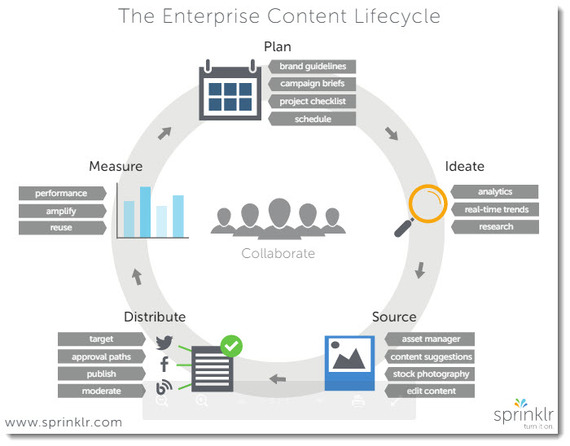Content is quickly emerging as one of the most important marketing tools of 2015. Content strategy, content distribution, content management - the term is everywhere you turn.
And it's no wonder. With social networks changing their algorithms by the day and organic reach continuing to decrease, owned channels, and the content they house, have never been more important.
Instead of sponsoring posts and repurposing content, brands are beginning to dedicate resources to building up their own dedicated content libraries. From Netflix's original series Orange Is the New Black and House of Cards and Chipotle's short films, brands are re-entering the realm of owned content.
And the trend isn't stopping any time soon, with 75% of marketers planning on increasing content production by at least 15% in 2015 (source: Content Marketing Institute). While the importance of content is clear, the process and method of scaling production at the enterprise level is not. In fact, 70% of marketers lack a consistent or integrated content strategy and only 37% say they are effective at content marketing (source: Altimeter, Content Marketing Institute).
Hiring great writers, developing effective processes, and implementing the proper infrastructure will streamline your company's content production.
Here are the five aspects of the content lifecycle that are crucial to consider when developing your strategy:
Plan
Before any content production begins, it is essential that your team discusses where each project fits in the larger marketing plan and how it contributes to the overall goals. Often times, content projects can begin in silos and not utilize the resources of the entire business to the fullest potential. Bringing key stakeholders to the table, as well as encouraging the collaboration between teams, is critical. Planning ahead allows for synergies and results in the most timely, relevant content for the business.
Ideate
Once the plan has been made, then the real creativity begins. Content teams should take into account the purpose of each piece, as well as the target audience, and the medium that the piece will take. Writers should always be auditing past content pieces / posts for the greatest successes and looking at real time events to ensure relevancy of the conversations.
Source
Content production is time-consuming and requires a high level of skill. Therefore, resources should be repurposed as much as possible in order to increase efficiencies. Can you reshape a blog post for the intro to a whitepaper? Can you pull quotes from a Q&A for social posts? Can you use the key data from the ebook to build an infographic? In particular, creative content can be widely repurposed as it is particularly labor-intensive and, if on brand, tends to be evergreen. Having a system in place to manage and edit all of these pieces can greatly assist in streamlining process and increasing internal collaboration.
Distribute
The distribution of content is as important, if not more so, than the product itself.
After approvals have been made and the boxes have been checked internally, it is time to share your company's great ideas with the world. But just distributing content isn't enough. To get the highest interest and engagement from the audience, one needs to consider the specific community you share the content with, as well as the medium on which the content is shared. It's important to know the community, understand the context of the conversations, and the format that would be the most appropriate for each social network or a forum.
Measure
To achieve the above and to continuously stay relevant, it is crucial that your company measures the success of content and tracks the KPIs that are important to your business. Knowing which content get the most passionate response and gets the conversation going is a plus. And, when specific pieces of content are particularly successful, paid media can be an effective tool in amplifying your reach. With analytics tracking and practical real-time insights you can evolve your content strategy and take it to new heights.
To be able to construct a strategy that would enable a company to experience the power of content marketing at scale and provide positive business impact, one needs the right people, the right internal processes, as well as the right infrastructure that would increase collaboration and real-time response and at the same time increase cost savings associated with the content lifecycle management.

